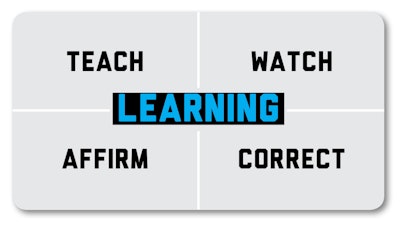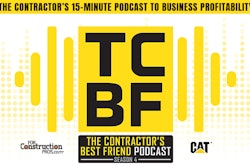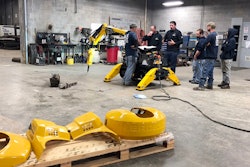
No doubt, you are finding training a little more challenging than in years’ past. Speaking at an industry conference recently I had more than 300 contractors and leaders agree, “Training today’s worker is harder than in past years.”
Like any leadership effort aiming to sustain improvement, a model or process is often helpful in setting out the right strategy. When training workers, a “trainer” needs more than patience alone; they need a process they can move through that methodically takes an employee with little-to-no knowledge and skill and steadily raises both.
several years ago I developed such a process that has now had thousands of field tests completed demonstrating how to train today’s workers. It’s called simply, the TWCA Model.
Let’s take a brief look at each “training secret” and provide some insights on how you might build this model into your efforts.
Teach
To teach is to share knowledge, experience, “tips,” and insights. It’s stressing the right way to do something…and why! Great contractor teachers are prepared, knowing their subject matter and their “students.” Teachers work to tailor their instruction to the needs of their workers, based on the level of understanding that is present in the workers. Teachers also work to take tasks that some perceive as difficult and make them simple to understand. They excel at breaking tasks and techniques into more “bite-size” teaching moments.
Example: Teaching a worker to sealcoat using a squeegee, the teacher would make it easier to learn if they were to explain how using a squeegee is different than spraying sealer, how to make sure to leave the proper amount of sealer on the surface, how to hold the squeegee, techniques to edge cleanly, and how to position your body to get the best results without physical strain.
Watch
So many construction workers learn by “hands-on” training. So, after you have taught the proper mechanics, clarified important information, and addressed your worker’s questions, you must allow your worker to actually execute. This stage in the model requires you, the teacher, to be patient and absent of immediate criticisms. You may want to chew a straw during this stage, but you must allow your worker to get their mind, hands, body etc. feeling what you have discussed and probably demonstrated.
Example: As you watch your worker execute their sealcoating effort, have a note pad and record your observation. Be detailed and accurate. This will probably take your mind off of making comments too quickly, which normally makes the worker a little nervous, and give you more accurate corrective suggestions.
Correct
OK, every good teacher must make corrective suggestions. This is where you want to be careful of what you say and how you say it. A great technique is to first ask the worker what they did, why they did it, and what areas would they improve. This often allows the worker to realize that you are really interested in building their knowledge and that they must work at the learning process.
Example: Upon the worker making his or her sealcoating effort, ask the worker: “How do you think you did? Why did you hold squeegee the way that you did? Were you comfortable as you pulled sealer across the asphalt? What do you wish you had done differently? How would you approach this effort again?” Such questions encourage an honest exchange of between teacher and student and further expose what needs to be taught.
Affirm
When teaching, we should not “pass” our workers efforts too easily, but we should affirm their effort, attitude, and physical effort as they execute proper techniques. Most workers learning something new are nervous enough, so you will want to be an encourager. When they do perform some task better than in previous efforts, verbally acknowledge this, letting them know that you do see the progress made. Such affirmation often builds consistency and mental and physical retention.
Example: When affirming a worker, compliment specifically what the worker did well. Just telling the worker, “That’s pretty good,” is not quite as affirming as saying, “Jim, I really like how you edged along that curb. That’s not an easy task and you did a nice job not getting sealer on the concrete.” Such a specific observation clearly affirms the worker and will help them to mentally recall proper technique and thought.
Without using some form of teaching model you will experience greater frustration than necessary. In reality, you will find that the TWCA model is one that will be a repeating effort: Teach a little; Watch a little; Correct a little; and Affirm a little.
Now…go train yourself to be a better construction teacher!












![Lee Boy Facility 2025 17 Use[16]](https://img.forconstructionpros.com/mindful/acbm/workspaces/default/uploads/2025/09/leeboy-facility-2025-17-use16.AbONDzEzbV.jpg?ar=16%3A9&auto=format%2Ccompress&fit=crop&h=135&q=70&w=240)








